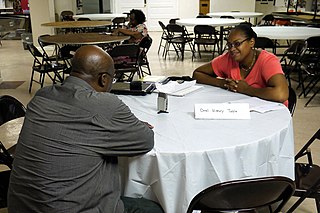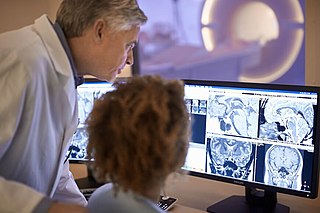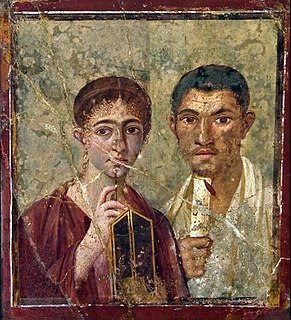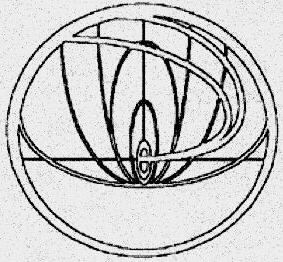A Polybiography is the use of archived internet email services such as ListServs and WWWeb to publish historical information by those involved in the history. The historical web site and ListServ provide for formal historical articles, images, photographs, commentary, and discussion of those items in a process called a "polybiography"... the history by many of the many events. The site is designed to be a searchable repository of "raw material" for those with an interest in the history of Diagnostic Medical Sonography (ultrasonography).
Email archiving is the act of preserving and making searchable all email to/from an individual. Email archiving solutions capture email content either directly from the email application itself or during transport. The messages are typically then stored on magnetic disk storage and indexed to simplify future searches. In addition to simply accumulating email messages, these applications index and provide quick, searchable access to archived messages independent of the users of the system using a couple of different technical methods of implementation. The reasons a company may opt to implement an email archiving solution include protection of mission critical data, to meet retention and supervision requirements of applicable regulations, and for e-discovery purposes. It is predicted that the email archiving market will grow from nearly $2.1 billion in 2009 to over $5.1 billion in 2013.
This Internet based historical archive has been referred to as a "polybiography" because it is both biographical and autobiographical; the many individuals involved write the history of the many events discussed. The resulting archive is expected to be similar to an oral history where an editor records and transcribes the various stories into a cohesive narrative. However, the oral history will have a slant due to the selection of participants and how they are edited. The polybiography will avoid a bias or slant from an editor because the participants are self-selected. The stories will be in the unedited words of the individuals who made the history. The primary problem anticipated will be the differences in individuals' writing styles, and a possibly confused organization.

An archive is an accumulation of historical records or the physical place they are located. Archives contain primary source documents that have accumulated over the course of an individual or organization's lifetime, and are kept to show the function of that person or organization. Professional archivists and historians generally understand archives to be records that have been naturally and necessarily generated as a product of regular legal, commercial, administrative, or social activities. They have been metaphorically defined as "the secretions of an organism", and are distinguished from documents that have been consciously written or created to communicate a particular message to posterity.

Oral history is the collection and study of historical information about individuals, families, important events, or everyday life using audiotapes, videotapes, or transcriptions of planned interviews. These interviews are conducted with people who participated in or observed past events and whose memories and perceptions of these are to be preserved as an aural record for future generations. Oral history strives to obtain information from different perspectives and most of these cannot be found in written sources. Oral history also refers to information gathered in this manner and to a written work based on such data, often preserved in archives and large libraries. Knowledge presented by Oral History (OH) is unique in that it shares the tacit perspective, thoughts, opinions and understanding of the interviewee in its primary form.
The polybiography is uniquely adapted to the Internet and would be virtually impossible without the Internet. Without the global connections it would be difficult to locate all the individuals who contributed to the development of historical events. By the use of the Internet anyone who has a story to tell about the developments will be able to add to the history. This will allow those who were assistants to contribute, as well as the luminaries; where as with the traditional oral history, the editor might not locate some relatively minor, relocated participants.
The concept of the "polybiography" was first presented at the Annual Conference 2000 of the American Association of History & Computing in Waco, Texas. [1] [2] The original article was titled "Poly-autobiography of Diagnostic Medical Sonography", [3] but during the discussion following the presentation it was suggested that, while the concept was thought to be a unique use of the Internet and WWWeb, the term "polybiography" would be more appropriate, more descriptive, and simpler.

Waco is a city in central Texas and is the county seat of McLennan County, Texas, United States. It is situated along the Brazos River and I-35, halfway between Dallas and Austin. The city had a 2010 population of 124,805, making it the 22nd-most populous city in the state. The 2018 US Census population estimate is 138,183 The Waco Metropolitan Statistical Area consists of McLennan and Falls Counties, which had a 2010 population of 234,906. Falls County was added to the Waco MSA in 2013. The 2018 US Census population estimate for the Waco MSA is 271,942.












